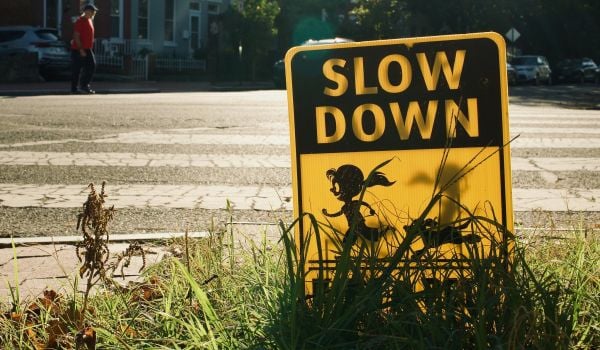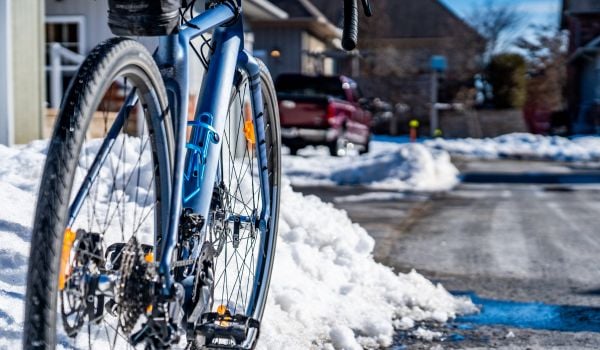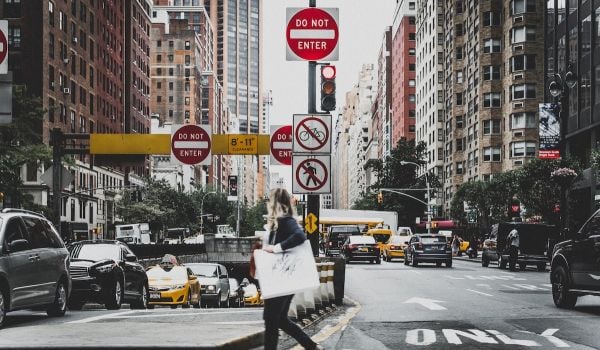Philadelphia could be an exceedingly bike-friendly city. It is relatively small, flat, and — in Center City and the halo of densely populated neighborhoods surrounding it — the streets tend to be narrow, studded with stop signs, and mapped to an easily navigated grid. Earlier this year the Census found that bicycling as means of commuting continues to increase in the U.S., and the Philadelphia Mayor’s Office reported last year that, of America’s 10 most populous cities, Philly is home to the most bike commuters.
To increase that number, additional bicycle infrastructure will be needed. But the Bicycle Coalition of Greater Philadelphia argues, in a new report released this morning, that the city doesn’t invest enough money in traffic safety infrastructure.
Here, the three big takeaways from the report.
1. Pedestrians are most vulnerable.
The Bicycle Coalition measured the number of traffic crashes, along with the fatalities and injuries caused by them. They found that the number of these collisions increased slightly since 2009, but that the number of deaths only exceeded 2009’s 95 fatalities once. But a high share of the death toll was borne by pedestrians: four out of every 10 deaths in 2013 (the statewide rate of pedestrian deaths is 1.25 percent). Similar numbers are found in the other years under review as well, although 2013 was the bloodiest (37 were killed).
“On average from 2009 to 2013, for every 1,000 crashes involving a motor vehicle occupant, 7 die,” the report reads. “For every 1,000 crashes involving a pedestrian, 19 die and for every 1,000 crashes involving a bicyclist, 5 die.”
Philadelphia’s walkability means there are a lot more pedestrians to get run over by cars. (The Census shows a walking commute rate of 8.6 percent, although that surely doesn’t capture the sheer number of pedestrians traversing downtown and its adjacent neighborhoods.) Is it any surprise that the fatally injured person is often the one who isn’t encased in more than a ton of steel?
It is worth noting that zero cyclists were killed in 2013. Indeed, the report insists that the annual fatalities among this cohort are so small that “no significant trend can be accurately inferred from the data.”
2. More bike infrastructure means safer streets for everyone.
The Coalition cites academic research by Rune Elvik and Peter Lyndon Jacobsen to show that the more bicyclists and pedestrians there are, the safer streets become for bicyclists and pedestrians. To get more people biking, Philadelphia needs to build more and better bike infrastructure. Studies have shown that increasing the number of bike lanes increases the number of bicyclists because potential cyclists feel safer, while recent research from the University of Minnesota found that drivers give cyclists in bike lanes more room.
The Coalition cites findings from the Mayor’s Office that reported that bike lanes mean fewer accidents for drivers as well. “After bike lanes were installed on Spruce and Pine streets, serious motor vehicle crashes on those streets dropped by 26 percent for the three years after installation, with little to no impact on a motorist’s average travel time on those streets,” the report notes. Fender benders were reduced by 31.5 percent.”
New York City’s Department of Transportation made similar findings this September in regards to that city’s protected bike lanes — an infrastructure upgrade Philly has not yet adopted. The study found that the streets with protected bike lanes, which are separated from traffic by a barrier of some kind, saw a 22 percent decline in pedestrian injuries and a 20 percent decline in overall injuries.
“When bike lanes are added to streets it acts as a traffic calming device,” says Sarah Clark Stuart, deputy director of the Bicycle Coalition. “That slows motor vehicles down. Therefore they have less of an opportunity to get in a crash or the crash is less severe. The other thing bike lanes do … when motorists see more bicyclists on the street they slow down and are more cautious.”
3. Philadelphia doesn’t spend much money on bike safety infrastructure.
Philly enjoys more miles of bike lanes than any other city on the East Coast. But its 400 miles of bike lanes mostly date from before the Great Recession. Between 2008 and 2013 only 36.2 miles of bike lanes were added. Mayor Michael Nutter is considered a bike-friendly guy, but his Streets Department hasn’t overseen much new development. During the same period, New York, Boston, Chicago, Pittsburgh and Baltimore all added more miles of bike lanes than Philadelphia, which also neglected to construct any of the protected variety. This stands in stark contrast with four of the six comparison cities the Coalition studied (after the span covered in the report, Pittsburgh began work on its own). Even sprawling cities like Memphis, Indianapolis, Austin and Atlanta have invested in this type of cycling infrastructure.
The root of the problem is the chronic underfunding of the Philadelphia Streets Department’s transportation budget. There is a backlog of 900 miles of streets that need repaving. Since the stimulus-inflated peak budget of 2009 ($20 million for street paving), the budgets have mostly come in well under that figure. Even when it reached a $20 million total again in 2012, street paving did not receive a majority of that funding. Instead, the Streets Department spent much of its budget attending to curb ramps required by 1990’s Americans with Disabilities Act.
“Philadelphia has a very constrained budget and a limited tax base, so its operating and capital budget has been constrained over the past few decades,” says Stuart. “There have been a lot of demands on its budget from other sectors — social service and security — and unfortunately department like Streets and Parks have had to bear the brunt of a lot of cuts.”
The Coalition found that the Streets Department’s Transportation budget, as a percent of the total general fund, declined 37 percent over the last 10 years. (This reflects, in part, the prioritization of the city’s immense law enforcement apparatus and the relative decline of the AFSCME’s District Council 33, which represents Streets Department workers.) As a percentage of the general fund, Philly’s streets budget is lower than any of the sister cities the coalition studied: Baltimore’s streets budget made up 5.5 percent of the general fund; Pittsburgh’s comprised 4.2 percent; Philadelphia’s is a mere 0.7 percent.
As the repavement of streets is effectively frozen so too is the construction of new bike lanes. (The most efficient time to lay new bike lanes is when the asphalt is fresh and the marks will most effectively adhere to the pavement.) Picking it up again would be a boon for drivers and bikers, although much will depend on the next mayor’s attitude toward bicyclists. The Democratic primary, the election that matters, is a mere five months away. None of the contenders have yet discussed their positions on transit issues.

















